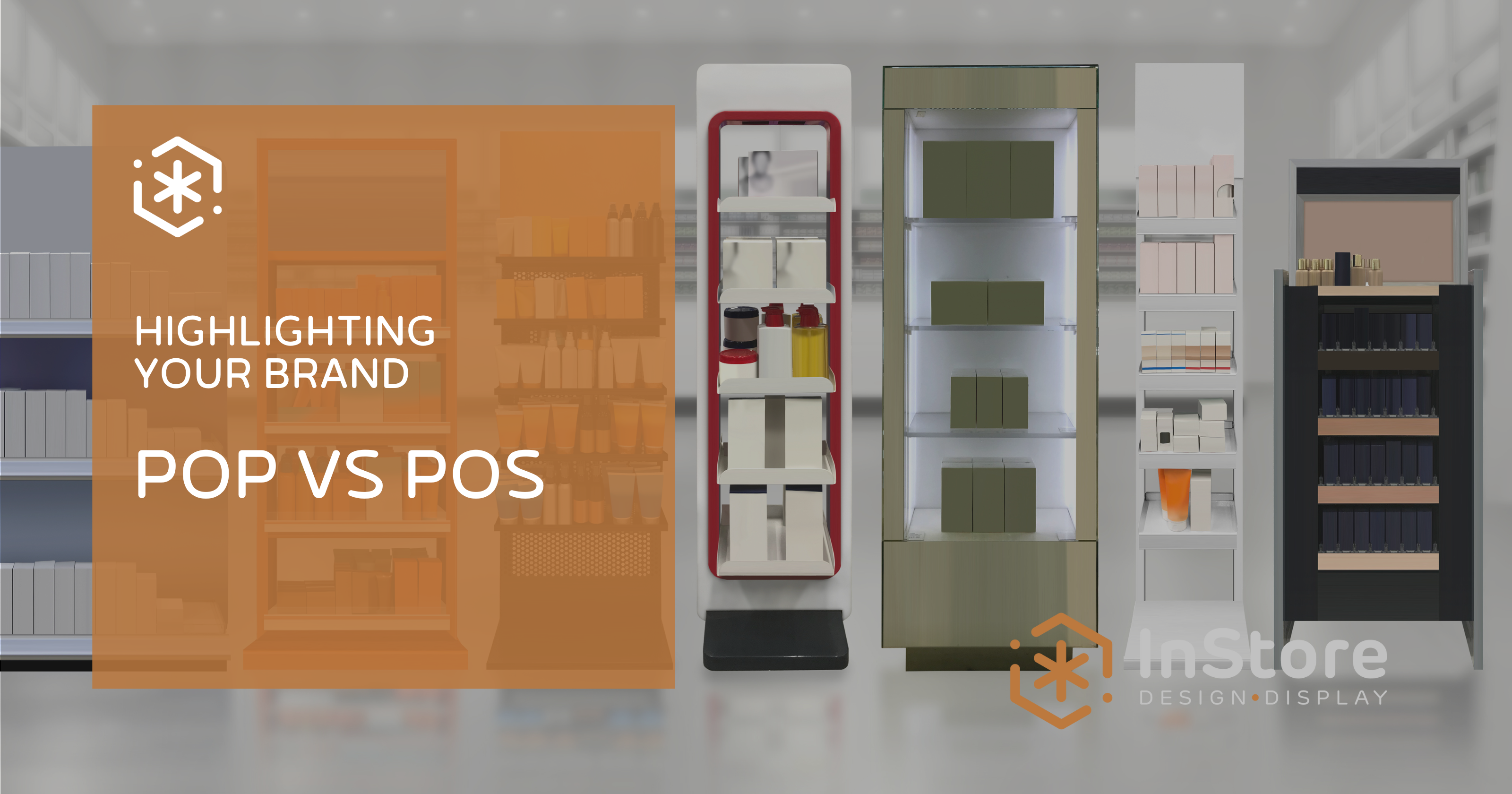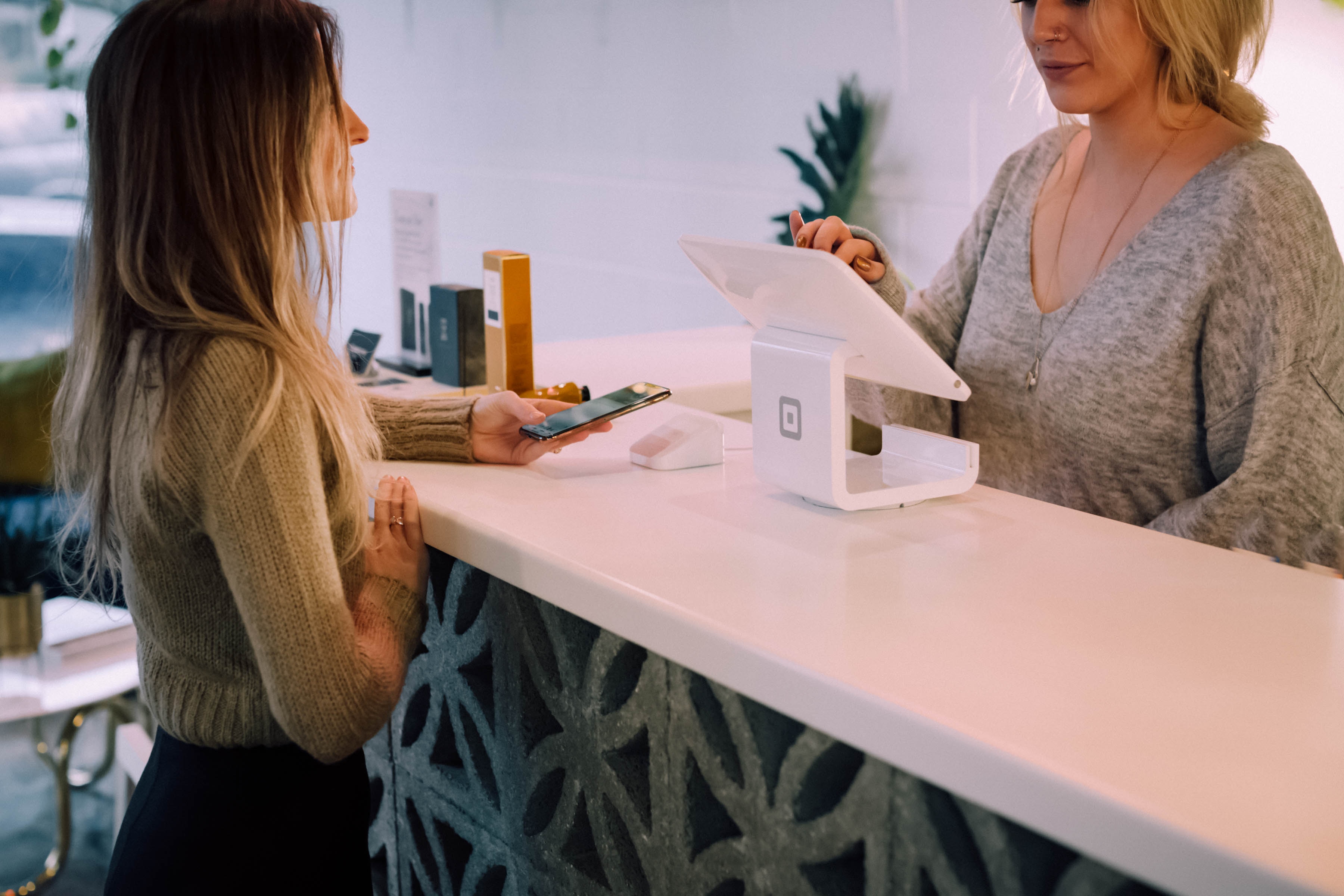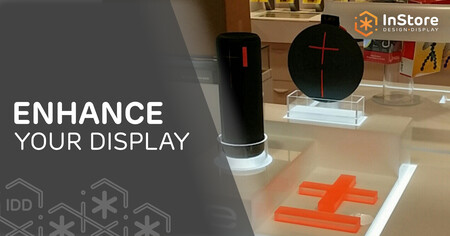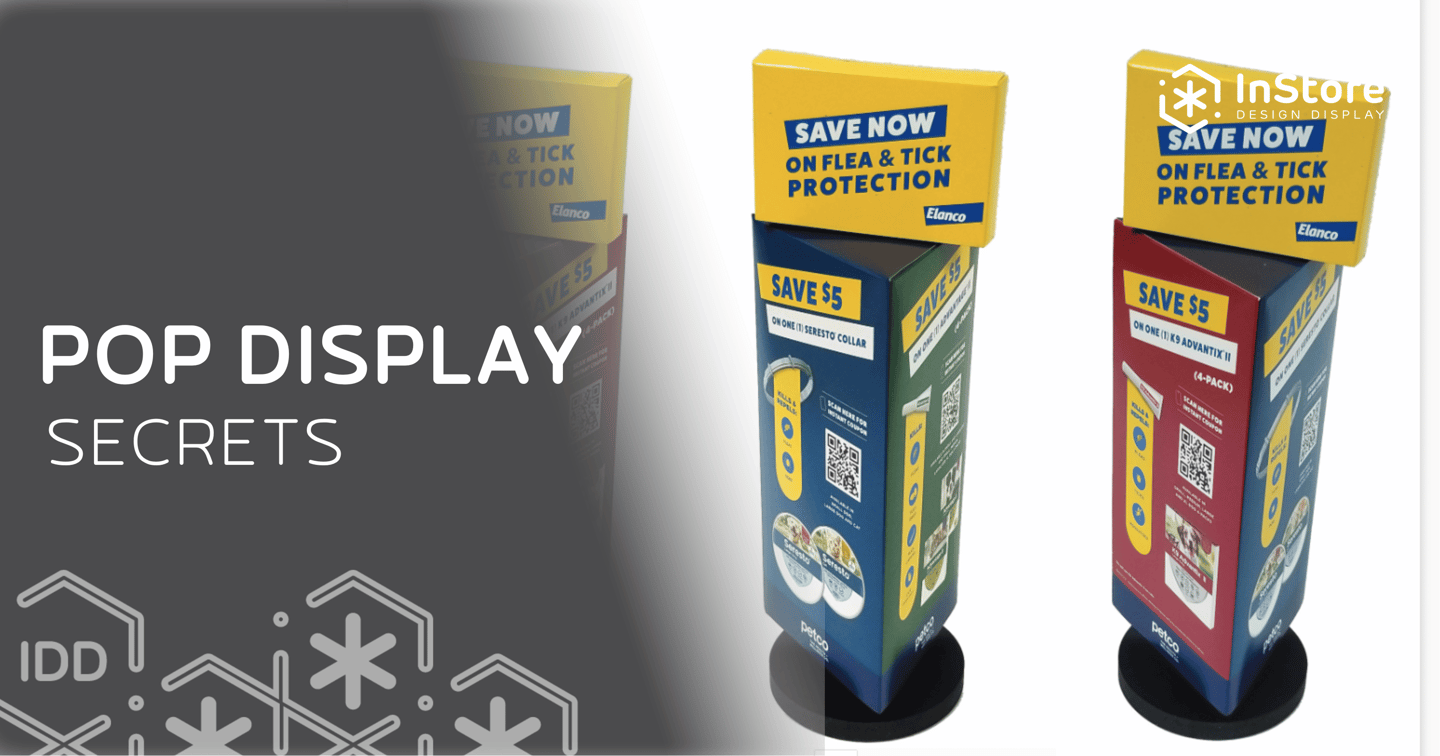
Secrets to Eye-Catching Point-of-Purchase (POP) Displays
Visual design has been a way to tell stories since the dawn of civilization. Although drawing pictures on cave walls isn’t quite the same as designing an engaging custom retail display for your product, it’s the same idea. People are hard-wired to respond to visuals, and therefore the power of an effective in-store Point-of-Purchase (POP) display cannot be denied.
Unfortunately, many brands aren’t using POP displays at all—and when they are, they aren’t used to their fullest potential. It's time to revisit the basics if you want to design custom point-of-purchase displays that drive more sales by capture consumers’ attention.
Here’s what you need to know.
Point-of-Purchase Display Basics
A POP display is a brand marketing asset that is displayed in-store with or near the merchandise it’s promoting. POP displays come in many different forms, including basic signage, vendor “shops” (or sections within the larger retail store dedicated to a particular brand), countertop displays, floor displays, end cap displays, and more.
Additionally, point-of-purchase displays can be temporary, semi-permanent, or permanent, depending on the type of promotion. During the holiday season, you’re likely to see temporary POP displays, like the one we did for DSW featuring seasonal items in a floor display, whereas very well-established brands might choose to leave their POP display up year-round.
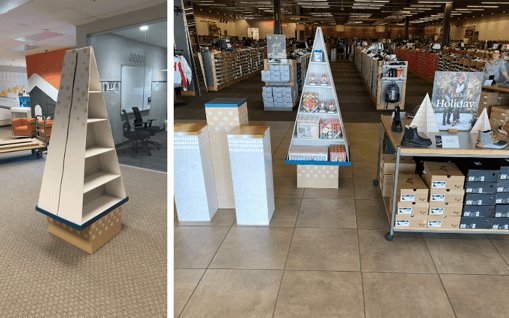 Think of a POP display as a standing salesperson for your product within the retail environment. Even if you have little control over the products that are featured near it and are competing for consumers’ attention, a POP display presents an opportunity to catch the consumers’ eyes, communicate your brand story, and ultimately increase sales.
Think of a POP display as a standing salesperson for your product within the retail environment. Even if you have little control over the products that are featured near it and are competing for consumers’ attention, a POP display presents an opportunity to catch the consumers’ eyes, communicate your brand story, and ultimately increase sales.
What Does an Effective Point-of-Purchase Display Look Like?
Although the specific strategies for designing an effective POP display may vary by industry, the best POP displays are always unique, “insta-worthy,” and eye-catching. Regardless of industry, product, or brand, providing consumers with a memorable in-store experience is a differentiator for POP displays.
The characteristics of an effective POP display are:
On-brand
As with any marketing material you might create for your brand, consistency is key. Consistent colors, logos, messages, and values make consumers feel more comfortable with your brand, and the more that they encounter these consistent, positive brand experiences, the more likely they’ll be to purchase from you in the future.
POP displays are no exception. An effective POP display tells your brand story in a way that is unique, authentic, and consistent with other marketing channels you may use. If your brand typically pushes sustainability as a part of its core identity, values, and strategy, then you should definitely use sustainable materials to build your POP display.
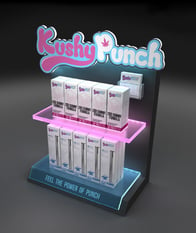
Kushy Punch’s CBD countertop display is an excellent example of a POP display that’s perfectly on-brand. The colors, fonts, and messages on the display present the same brand personality you’d encounter if you ordered Kushy Punch’s products online, providing a seamless and engaging experience for consumers.
By using on-brand POP displays to differentiate your product from those surrounding it, you can improve brand recognition and ensure that every time a consumer walks past your display, they’re getting exactly the right message about your products.
Strategically Located
Typically, POP displays are located near or around the cash register or the entrance of the store—hence the name, “point of purchase.” Because these locations are usually where the final purchasing decision is made, an engaging point-of-purchase display can encourage consumers to make spur-of-the-moment purchasing decisions when they wouldn’t have otherwise. Bayer Animal Health's countertop spinner is an excellent example of a POP display that stands out and engages the customer near the register.
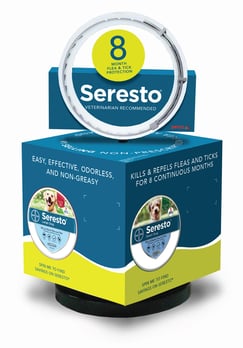
However, these high-traffic areas near the entrance and cash register aren’t the only options for your POP display. Depending on the product, the store environment, and the target audience, you may find that other areas are more effective for your display.
Choosing the right location for your display comes down to understanding human behavior and mapping out the path that your ideal consumers are likely to take while navigating the store. For example, at InStore Design Display, we often take the time to personally visit the stores where our clients’ displays will be featured and audit the likely path of purchase leading consumers’ to our client's products. By profiling the unique landscape of the store and taking a pulse on the look and feel of the overall store environment, we’re able to design more than just attractive, standalone displays—we’re able to design effective point-of-purchase displays that are as relevant as possible within the context of the overall store.
This strategy requires nuance, experience, and flexibility, particularly if you’re designing a POP display that will be featured in a wide variety of retailers. The bigger the retailer, the more restrictions and guidelines they have over what your display can look like and where it can be located, whereas smaller, independent retailers may allow for more wiggle room.
Modular
Because different retailers may have varying guidelines on what you can and can’t do with your POP display—and because each physical brick-and-mortar location may have a different in-store environment, even across the same retail brand—modularity is a critical component of any POP display.
Most brands don’t have the luxury of profiling each individual store in which they’ll be displaying their products, so incorporating flexibility and modularity into your point-of-purchase display design can ensure that your display stands out regardless of the in-store layout. For example, by including elements that allow retailers to convert your POP display from a countertop display to a freestanding display, you provide retailers with all of the tools they need to present your products in the most attractive and engaging way possible.
This freestanding display for Bushnell Golf is a great example of a modular display. Because it comes with both the storage base and spinner display, it can stand alone on the shop floor or be featured as a smaller countertop display.
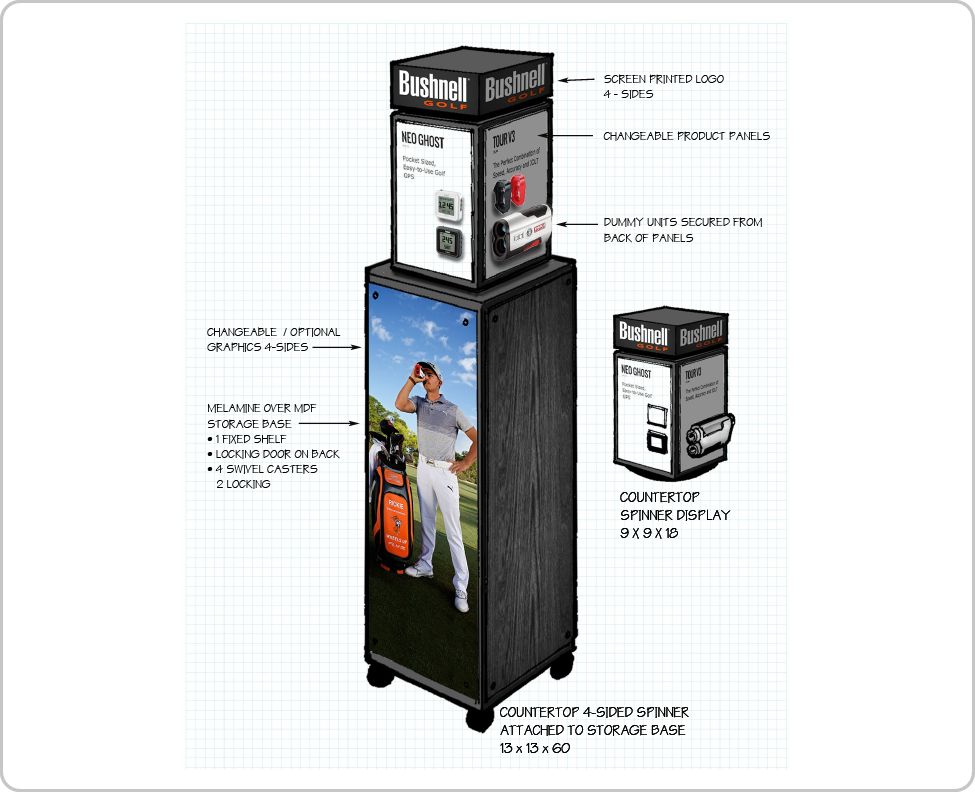
Functional
Many retail promotional items like POP displays never actually make it to the sales floor.
Why? Often, POP displays are left to gather dust in the back room because they’re too complicated for the retail employees to put together—and the only thing worse than not utilizing POP displays altogether is taking the time, money, and effort to design an outstanding POP display, only to have retailers toss it out when it arrives at their stores.
To avoid this challenge, POP displays need to be designed with not only the consumer in mind but also the end-user and the end-environment in mind as well. If your display is so complex that a high school retail employee can’t pull it out of the box and put it together on their own, then you need to simplify your design.
POP Displays can Make or Break a Sale
In the past, brands would sell their product to retailers looking for shelf space, period. At that point, any amount of shelf space was enough, because there were a limited number of places where consumers could shop for items of interest.
However, today’s consumers can browse and buy online, so brands continuously vie for attention. In this over-saturated, over-stimulated retail paradigm, POP displays present a unique opportunity to differentiate your brand and offer consumers an experience they won’t forget.
Looking for inspiration for your next POP display design? Request a consult to get started.
Subscribe Here
Stay up-to-date on what's happening on our podcast and blog.

